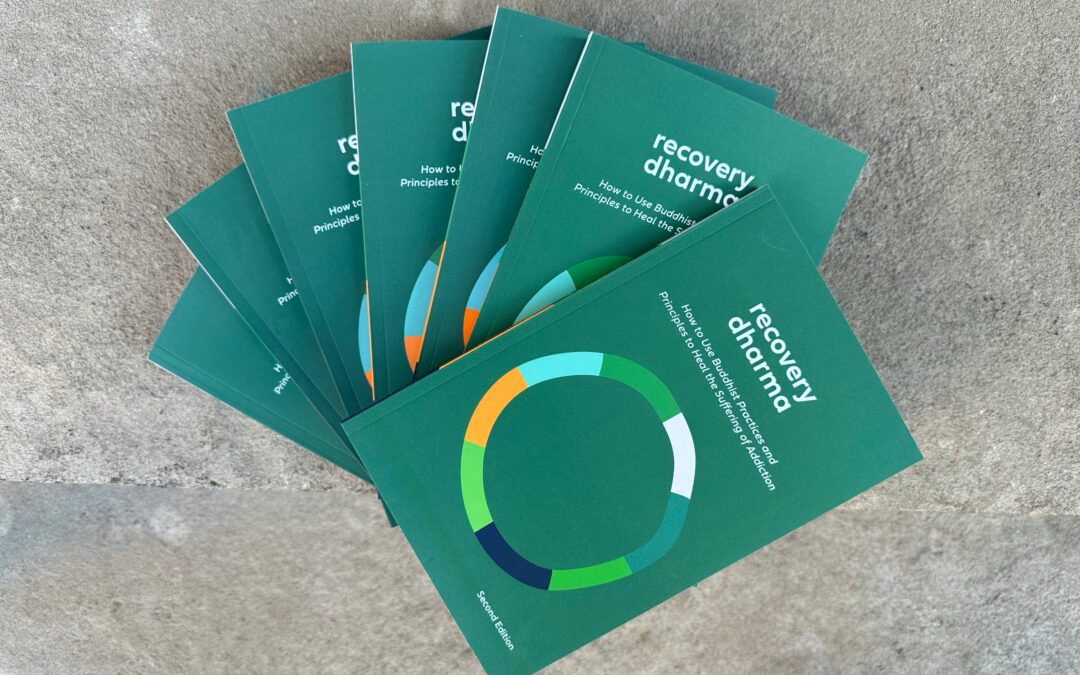The Second Edition improves our program by supplementing the text to make it even more inclusive and trauma-informed. It also includes personal recovery stories from fourteen of our members. We hope you find inspiration in their shared experiences of finding freedom from harmful behaviors through Buddhist practice and the community of Recovery Dharma.
The Second Edition also includes a new symbol that may be used by our community. Below, you can learn more about the meaning of the symbol and the intention with which it was created. The circle symbol will also be available for download for sanghas’ usage.
We are grateful to everyone who made the Second Edition possible: for those who wrote the first edition, for those who designed, edited and supplemented new text for the second edition, and for those who shared their stories. It really is the product of a collaborative effort by volunteers of our global sangha!
———————————————————–
We thought our community would be interested in some of the decision-making and symbolism behind the new book design.
The colors were inspired by a 19th century Tibetan painting located at the Ruben Museum in New York City: Tara Protecting From the Eight Fears. These colors are also used throughout our website and social media. We also enjoy that the colors feel inviting and friendly and that because of their brightness, the book can be spotted from across the room.
The circle on the cover of the book is sectioned into eight different parts and represents the Eightfold Path. Just like us, it’s imperfect, perhaps a bit wonky. It symbolizes our ongoing journey on this path and how we continue to grow and recognize areas of our practice that could use some more attention and care. The circle, with its many colors and varying internal shapes, can also represent the diversity that our global sangha contains and how, without that diversity, we would not be whole.
The triangles on the back of the book represent the Three Jewels of the Buddha, Dharma and Sangha and the four columns going up the spine of the book symbolize the Four Noble Truths, which serve at the foundation of our program and path (and which literally hold the book together).
Apart from that, our new book design had a number of desired parameters to begin with:
One, that the design could be serialized, ie. there could be numerous RD books using the same design but with color variation. We also wanted to make sure it could be easily modified by boards to come and not just by the hands that originally put it together. Lastly, we wanted the imagery of the book to be rooted in Buddhism but not so much that it could feel like a barrier to entry for people not familiar with it or uncomfortable with religious iconography.
We hope you enjoy the new book and its design as much as we enjoyed making it!

